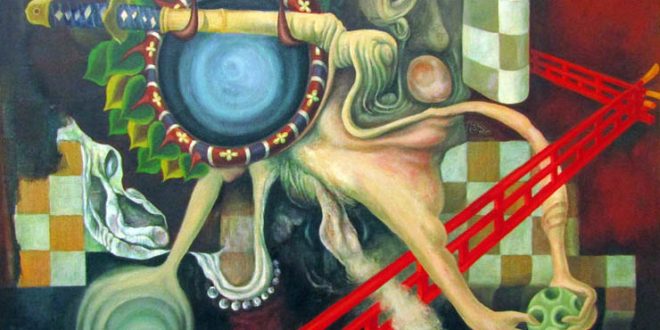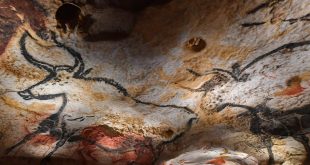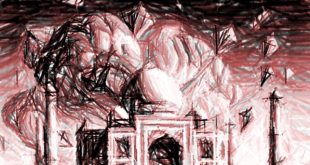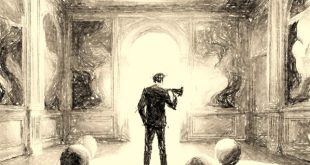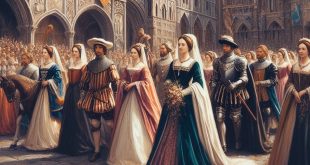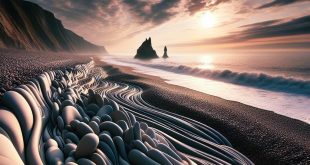Like origami, a way of being creative
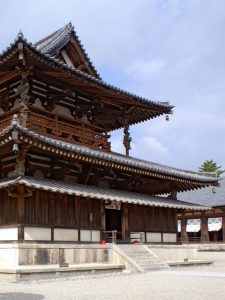 Japanese painting encompasses a wide variety of genres and styles, with ancient paintings including the murals on the interior walls of the Kondō in Ikaruga’s Hōryū-ji temple. Numerous versions of mandalas have been create as scrolls even hung on the walls of temples. At the time of the Kamakura period, the Unkei painter opened his own school called Kei. By catching a catfish with a pumpkin, the painter-priest Josetsu marked a turning point in Muromachi’s painting. The Tosa School, on the other hand, was know for its illustrations of literary classics in book format. Prominent artists of the Edo period, include Tawaraya Sōtatsu and Suzuki Harunobu. Japanese painting of the Taishō period was influence by European neoclassicism and late post-impressionism. Prominent post-WWII artists include Ogura Yuki, Koiso Ryohei, and Kikuji Yamashita. In 1962, he held his first solo show.
Japanese painting encompasses a wide variety of genres and styles, with ancient paintings including the murals on the interior walls of the Kondō in Ikaruga’s Hōryū-ji temple. Numerous versions of mandalas have been create as scrolls even hung on the walls of temples. At the time of the Kamakura period, the Unkei painter opened his own school called Kei. By catching a catfish with a pumpkin, the painter-priest Josetsu marked a turning point in Muromachi’s painting. The Tosa School, on the other hand, was know for its illustrations of literary classics in book format. Prominent artists of the Edo period, include Tawaraya Sōtatsu and Suzuki Harunobu. Japanese painting of the Taishō period was influence by European neoclassicism and late post-impressionism. Prominent post-WWII artists include Ogura Yuki, Koiso Ryohei, and Kikuji Yamashita. In 1962, he held his first solo show.
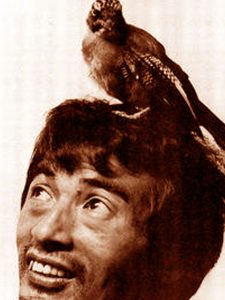 Kikuji Yamashita https://visualizingcultures.mit.edu/protest_art_50s_japan/anp1_essay04.html was born in 1919 in Miyoshi, located in Japanese Tokushima Prefecture, where Shikoku Mountains have steep slopes subject to landslides and rockfalls. Graduated from Takamatsu Crafts High School in 1938, he moved to Tokyo, where began studying under Japanese Surrealist painter Ichirō Fukuzawa, knowing work of Max Ernst and Hieronymus Bosch. In 1970, he wrote an essay relating to his war years, including the guilt he felt for his actions at the time. Numerous galleries and museums, such as the National Museum of Contemporary Art Korea, have presented his work.
Kikuji Yamashita https://visualizingcultures.mit.edu/protest_art_50s_japan/anp1_essay04.html was born in 1919 in Miyoshi, located in Japanese Tokushima Prefecture, where Shikoku Mountains have steep slopes subject to landslides and rockfalls. Graduated from Takamatsu Crafts High School in 1938, he moved to Tokyo, where began studying under Japanese Surrealist painter Ichirō Fukuzawa, knowing work of Max Ernst and Hieronymus Bosch. In 1970, he wrote an essay relating to his war years, including the guilt he felt for his actions at the time. Numerous galleries and museums, such as the National Museum of Contemporary Art Korea, have presented his work.
 Among the artists to be known in the Japanese music scene, the folk-rock band Happy End who with their album Kazemachi Roman encapsulated the spirit of the mid-60s. With the song Transistor Radio, the band RC Succession contributed powerfully to forging the rock culture of an entire Japanese generation. In the early 1990s, Keigo Oyamada, aka Cornelius, expertly combined pop with jazz and synth-pop. Incorporating elements of electro and house, Yasutaka Nakata has created a pop catalog with a high musical grade production. In 1999, Japanese singer and blogger Kōji Wada debuted Butter-Fly, the song that became the opening theme of the Digimon Adventure anime.
Among the artists to be known in the Japanese music scene, the folk-rock band Happy End who with their album Kazemachi Roman encapsulated the spirit of the mid-60s. With the song Transistor Radio, the band RC Succession contributed powerfully to forging the rock culture of an entire Japanese generation. In the early 1990s, Keigo Oyamada, aka Cornelius, expertly combined pop with jazz and synth-pop. Incorporating elements of electro and house, Yasutaka Nakata has created a pop catalog with a high musical grade production. In 1999, Japanese singer and blogger Kōji Wada debuted Butter-Fly, the song that became the opening theme of the Digimon Adventure anime.
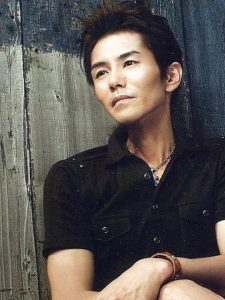 Together with Butter-Fly, his husky singing voice continues to enchant fans of anime songs. Born in Fukuchiyama (Kyoto), into a 1974 January day, Kōji Wada https://anidb.net/creator/6927 was a Japanese pop singer. In 2003 released All of My Mind, his first original album; later, he released The Best Selection, an album that contains several of his earlier works. In Mexico, in 2010 he did concerts in a J-pop event and anime convention. He has been responsible for singing numerous songs for every entry in the Digimon series. Among Digimon Discography, you can listen his Butter-Fly: BUTTER-FLY – https://www.youtube.com/watch?v=YAxNwRb93xk I will become a happy butterfly, and ride on the glittering wind. I will come to see you soon. It is best to forget the unnecessary things. There is no more time to be fooling around. What do you mean? I wonder if we will reach the skies, but I do not even know what my plans are for tomorrow. After an endless dream, in this world of nothingness. It seems as if our beloved dreams will lose; even with these unreliable wings, covered in images that tend to stay. I am sure we can fly, on my love. I will become a merry butterfly, and ride on the earnest wind. I will come to see you where ever you are. Ambiguous words are surprisingly handy. I will shout it out, while listening to a hit song. What do you mean? I wonder if it will echo through this town, but there is no use anticipating. After an endless dream, in this miserable world. That is right; maybe not using common sense is not so bad after all. Even with these awkward wings, dyed with images that seem to stay. I am sure we can fly, on my love. After an endless dream, in this world of nothingness. It seems as if our beloved dreams will lose. Even with these unreliable wings, covered in images that tend to stay. I am sure we can fly, oh yeah. After an endless dream, in this miserable world. That is right; maybe not using common sense is not so bad after all. Even with these awkward wings, dyed with images that seem to stay. I am sure we can fly, on my love.
Together with Butter-Fly, his husky singing voice continues to enchant fans of anime songs. Born in Fukuchiyama (Kyoto), into a 1974 January day, Kōji Wada https://anidb.net/creator/6927 was a Japanese pop singer. In 2003 released All of My Mind, his first original album; later, he released The Best Selection, an album that contains several of his earlier works. In Mexico, in 2010 he did concerts in a J-pop event and anime convention. He has been responsible for singing numerous songs for every entry in the Digimon series. Among Digimon Discography, you can listen his Butter-Fly: BUTTER-FLY – https://www.youtube.com/watch?v=YAxNwRb93xk I will become a happy butterfly, and ride on the glittering wind. I will come to see you soon. It is best to forget the unnecessary things. There is no more time to be fooling around. What do you mean? I wonder if we will reach the skies, but I do not even know what my plans are for tomorrow. After an endless dream, in this world of nothingness. It seems as if our beloved dreams will lose; even with these unreliable wings, covered in images that tend to stay. I am sure we can fly, on my love. I will become a merry butterfly, and ride on the earnest wind. I will come to see you where ever you are. Ambiguous words are surprisingly handy. I will shout it out, while listening to a hit song. What do you mean? I wonder if it will echo through this town, but there is no use anticipating. After an endless dream, in this miserable world. That is right; maybe not using common sense is not so bad after all. Even with these awkward wings, dyed with images that seem to stay. I am sure we can fly, on my love. After an endless dream, in this world of nothingness. It seems as if our beloved dreams will lose. Even with these unreliable wings, covered in images that tend to stay. I am sure we can fly, oh yeah. After an endless dream, in this miserable world. That is right; maybe not using common sense is not so bad after all. Even with these awkward wings, dyed with images that seem to stay. I am sure we can fly, on my love.
A classified collection of Haiku compiled by Masaoka Shiki, collects haiku by seasonal themes and sub-themes, includes 15th century poems. The haiku poetic genre, widespread in Japan already in the distant Edo period, owes its current name to Masaoka Shiki, a writer who coined the term as a contraction of haikai no ku (verse of a joking poem). With her splendid phrasing, Sugita Hisajo was among the first women to express modern haiku: Nude, after hanami; scattered on the ground the kimono and a tangle of laces. In the history of modern Japanese poetry, on the other hand, Hagiwara Sakutar is a leading figure.
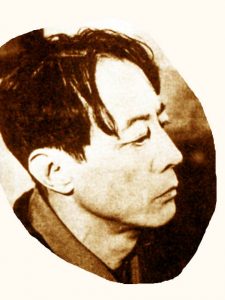 In publishing a collection of aphorisms, he even tried to express his very personal sensual philosophy. With his book of poems, in 1917, he started a new poetic language in which poetry took concrete form in the words themselves. In some of his poems, he even criticized the suffocation of individuality by group life. More than just a poet, the Japanese https://allpoetry.com/Sakutaro-Hagiwara can be consider as the founder of free verse in his country. Born in Maebashi in 1886, he spent a golden childhood, which allowed him to present his poems to public attention at the age of 15. Now, you can read one of his short poem, CHAIR – The person sleeping under the chair, is he the children of the person who made the grand house?
In publishing a collection of aphorisms, he even tried to express his very personal sensual philosophy. With his book of poems, in 1917, he started a new poetic language in which poetry took concrete form in the words themselves. In some of his poems, he even criticized the suffocation of individuality by group life. More than just a poet, the Japanese https://allpoetry.com/Sakutaro-Hagiwara can be consider as the founder of free verse in his country. Born in Maebashi in 1886, he spent a golden childhood, which allowed him to present his poems to public attention at the age of 15. Now, you can read one of his short poem, CHAIR – The person sleeping under the chair, is he the children of the person who made the grand house?
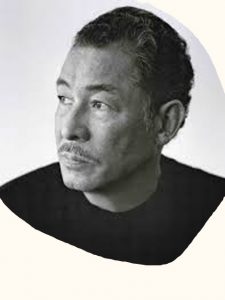 Each of them is special: Issey Miyake as the great old man in the industry, Kenzō Takada for his boundless creativity that fades from fashion to perfumes, or DJ Nigo and his youthful fashion. Among the most interesting Japanese designers of the moment we remind you of Junya Watanabe, former designer of the fashion house Comme des Garçons, known for his collaborations with Levi’s and Converse. Beloved in high fashion, the designer Tae Ashida (daughter of a designer) pays particular attention to women. Kansai Yamamoto, on the other hand, has also caused a sensation at the Parisian fashion shows, with dresses that border on the avant-garde art of absolute originality.
Each of them is special: Issey Miyake as the great old man in the industry, Kenzō Takada for his boundless creativity that fades from fashion to perfumes, or DJ Nigo and his youthful fashion. Among the most interesting Japanese designers of the moment we remind you of Junya Watanabe, former designer of the fashion house Comme des Garçons, known for his collaborations with Levi’s and Converse. Beloved in high fashion, the designer Tae Ashida (daughter of a designer) pays particular attention to women. Kansai Yamamoto, on the other hand, has also caused a sensation at the Parisian fashion shows, with dresses that border on the avant-garde art of absolute originality.
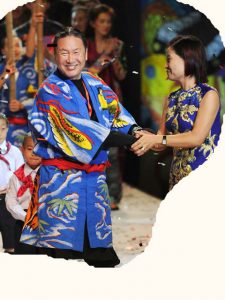 In the way she dresses and uses bright colors, her name has become synonymous with avant-garde design, emphasizing a sculptural tailoring that wraps the body in layers. He was born a year before his city was firebombed in the war. Born in 1944 in Yokohama, Kansai Yamamoto https://www.farfetch.com/sk/shopping/women/kansai-yamamoto-pre-owned/items.aspx majored in English and dropped out, to focus on fashion apprenticing at ateliers of designers Junko Koshino and Hisashi Hosono. He designed for David Bowie a special bodysuit, Tokyo Pop. In the early Nineties, around the world he focused on live entertainment events that combined music and dance with traditional Japanese festivals. At the Edo-Tokyo Museum, in 2008, was held an exhibit named Passionate Exhibit: The Energy Principle of Kansai.
In the way she dresses and uses bright colors, her name has become synonymous with avant-garde design, emphasizing a sculptural tailoring that wraps the body in layers. He was born a year before his city was firebombed in the war. Born in 1944 in Yokohama, Kansai Yamamoto https://www.farfetch.com/sk/shopping/women/kansai-yamamoto-pre-owned/items.aspx majored in English and dropped out, to focus on fashion apprenticing at ateliers of designers Junko Koshino and Hisashi Hosono. He designed for David Bowie a special bodysuit, Tokyo Pop. In the early Nineties, around the world he focused on live entertainment events that combined music and dance with traditional Japanese festivals. At the Edo-Tokyo Museum, in 2008, was held an exhibit named Passionate Exhibit: The Energy Principle of Kansai.
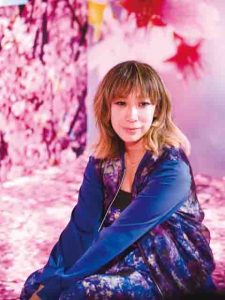 There are those like Mika Ninagawa the photographer and director who stood out for her style characterized by bright and bright colors; but also those who, like the feminist photographer and artist performer Tomoko Sawada, have managed to establish themselves in numerous group exhibitions in Japan, Europe and the United States. Portraying normal moments in her life, Rinko Kawauchi creates his own photographic approach characterized by a serene and poetic style. Other photographers, such as Issei Suda and Hamaya Hiroshi, have perfectly managed to capture Japanese customs with an investigative eye.
There are those like Mika Ninagawa the photographer and director who stood out for her style characterized by bright and bright colors; but also those who, like the feminist photographer and artist performer Tomoko Sawada, have managed to establish themselves in numerous group exhibitions in Japan, Europe and the United States. Portraying normal moments in her life, Rinko Kawauchi creates his own photographic approach characterized by a serene and poetic style. Other photographers, such as Issei Suda and Hamaya Hiroshi, have perfectly managed to capture Japanese customs with an investigative eye.
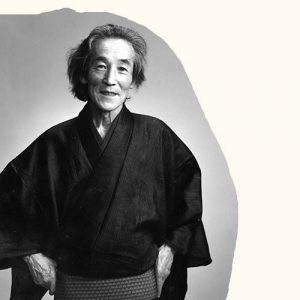 Within the New Photography movement, he became famous in his country before World War II. In the 1950s, https://www.moma.org/artists/2475 settled in Ōiso, where he began to rethink his photographic work with a view to making books out of it. Hamaya Hiroshi https://www.shashasha.co/en/book/hiroshi-hamaya-photographs-1930s-1950s , one of the foremost Japanese documentary photographers of the 20th century, was born in Tokyo in 1915. After his aeronautical photographic experience, began documenting his hometown inoriginal way: from the sky and the streets. Interested in traditional customs of people and the climate of the region, in 1939, he travel to the coast of Japan. Developing an ethnographic approach toward photography, over two decades he captured many coastal prefectures life.
Within the New Photography movement, he became famous in his country before World War II. In the 1950s, https://www.moma.org/artists/2475 settled in Ōiso, where he began to rethink his photographic work with a view to making books out of it. Hamaya Hiroshi https://www.shashasha.co/en/book/hiroshi-hamaya-photographs-1930s-1950s , one of the foremost Japanese documentary photographers of the 20th century, was born in Tokyo in 1915. After his aeronautical photographic experience, began documenting his hometown inoriginal way: from the sky and the streets. Interested in traditional customs of people and the climate of the region, in 1939, he travel to the coast of Japan. Developing an ethnographic approach toward photography, over two decades he captured many coastal prefectures life.
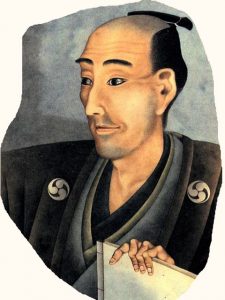 In 1814, Katsushika Hokusai began illustrating short stories in which samurai took center stage. In Japan they are called manga, a combination of kanji (informal) and drawing (ga). Yet, in the West that word is used to refer to both comics and Japanese-style drawing where attention to every little detail, dedication and time are essential elements. After his Bachelor of Fine Arts degree, Masashi Tanaka found success with a comic series based on a tyrannosaurus called Gon. While Hiroya Oku created stories by combining science fiction and gory action, Japanese manga artist Mitsuteru Yokoyama found fertile creative streak in ancient literature.
In 1814, Katsushika Hokusai began illustrating short stories in which samurai took center stage. In Japan they are called manga, a combination of kanji (informal) and drawing (ga). Yet, in the West that word is used to refer to both comics and Japanese-style drawing where attention to every little detail, dedication and time are essential elements. After his Bachelor of Fine Arts degree, Masashi Tanaka found success with a comic series based on a tyrannosaurus called Gon. While Hiroya Oku created stories by combining science fiction and gory action, Japanese manga artist Mitsuteru Yokoyama found fertile creative streak in ancient literature.
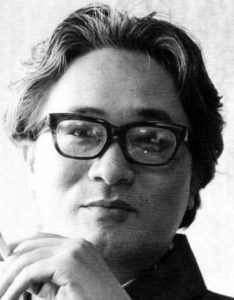 The boy who loved reading novels and comics in magazines was born in the city of Kobe at the gates of the summer of 1934. Attracted by Osamu Tezuka’s famous comics, he appreciated their ability to write interesting stories; although not as good as he was, however, he drew comics and sent the draft to the editors: half of his materials were accepted. Postwar Japan was poor, but with publishers specializing in rental books, especially for children. Mistuteru Yokoyama https://hmong.es/wiki/Mitsuteru_Yokoyama was 20 when an Osaka publisher asked him to write a feature-length comic The Silent Sword, which was follow by The Story of Little Lily and The Demonic Swirling Sword. In making comics, he was able to draw a page in 30 minutes. Yet it was only with Ironman 28th aka Gigantor that his parents accepted his career choice. Today, he is remember among the founding giants of the genre we call manga.
The boy who loved reading novels and comics in magazines was born in the city of Kobe at the gates of the summer of 1934. Attracted by Osamu Tezuka’s famous comics, he appreciated their ability to write interesting stories; although not as good as he was, however, he drew comics and sent the draft to the editors: half of his materials were accepted. Postwar Japan was poor, but with publishers specializing in rental books, especially for children. Mistuteru Yokoyama https://hmong.es/wiki/Mitsuteru_Yokoyama was 20 when an Osaka publisher asked him to write a feature-length comic The Silent Sword, which was follow by The Story of Little Lily and The Demonic Swirling Sword. In making comics, he was able to draw a page in 30 minutes. Yet it was only with Ironman 28th aka Gigantor that his parents accepted his career choice. Today, he is remember among the founding giants of the genre we call manga.
The intellectual properties of the images that appear on this blog correspond to their authors. The only purpose of this site is to spread the knowledge of these creative people, allowing others to appreciate the works. If you want to know our author travel already published, you can type http://meetingbenches.com/category/author_travels/.
 Meeting Benches World art in all forms
Meeting Benches World art in all forms
